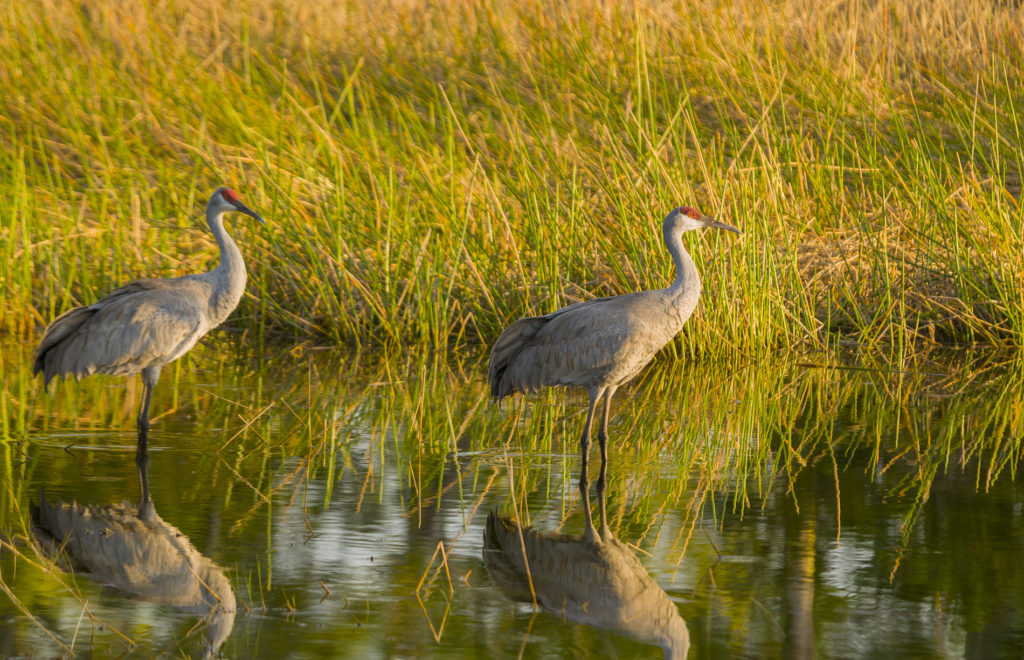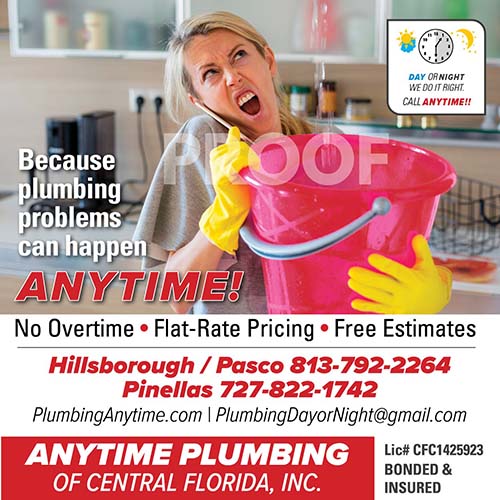In the span of six weeks, four Sandhill Cranes were hit and killed along Linebaugh Avenue in Westchase.
With a body length just shy of four feet and a wingspan of six feet, the sandhill crane is one of the most majestic creatures living among us. Florida is one of the few places in the world sandhill cranes can be found year-round. The year-round residents are the non-migratory Florida sandhill cranes, which typically roam in pairs or small family groups. There are now fewer than 5,000 Florida sandhill cranes across the state and they are listed as a state-designated threatened species.
Within Westchase, sandhill cranes can frequently be seen strolling across the Westchase Golf Course, on the fields at Davidsen Middle School and throughout our neighborhoods. You may also hear their loud, trumpeting call as they fly overhead.
Cars are one of the biggest threats to these birds, which are drawn to golf courses, grassy curbsides and medians where the mown grass makes it easier to hunt for worms, crickets and grubs. According to Kris Porter with Owl’s Nest Sanctuary, sandhill cranes don’t have the instinct to take flight when cars are coming at them. “They have no mentality of being afraid of people or cars,” Porter said. “People need to slow down and beep their horn.”
Porter said the other issue at play is people feeding them at the restaurants in Westchase Town Center that are near the roadway. Porter stated that it is illegal do anything that alters the bird’s natural behavior, including intentionally feeding them.
According to Adrienne Fitzwilliam, Avian Conservation Coordinator with the Florida Fish and Wildlife Conservation Commission (FWC), residents with birdfeeders may be unintentionally feeding the cranes, which can also put them in harm’s way. If residents have birdfeeders that are spilling over and they know cranes are visiting to feed on the seed, she advises them to remove the birdfeeder. “As an avid birdwatcher, I know it is hard,” Fitzwilliam said. When cranes are fed, they learn to associate people with food. “Feeding them makes them less wary of cars and humans, and can sometimes lead to aggressive behavior,” Fitzwilliam said. Cranes attracted to people’s yards for food are also put at risk as they cross roadways to reach their meal. As much as people enjoy seeing the cranes strolling through their neighborhoods, attracting these birds to urban settings puts them at greater risk of harm.
Adding to the decrease in the crane’s population is the fact that cranes mate for life and only have two offspring a year. The baby birds are able to follow their parents in search for food just 24 hours after hatching, yet they are unable to fly and are often accidentally hit and killed by drivers. “It is getting to be a dire situation,” Porter said.
What to do if you see an injured crane
Residents can call or text Owl’s Nest Sanctuary at (813) 598-5926 to report an injured bird, leaving the following information: name, phone number and the location of the injured crane. Porter noted that rescues require patience as their team currently covers 13 counties.
Porter also stated that residents may see cranes with injuries that have become adaptations. A case in point was a crane with a permanent broken wing spotted in the pond adjacent to Westchase Town Center. The bird had been reported and Porter noted there was nothing that could be done for the bird, and it was best left in its natural habitat. Porter added that residents should never take it upon themselves to scoop up the birds and take them to a veterinarian. “People panic and apply the empathy they have for their pets,” Porter said. While she said the intention is good, it can lead to dire consequences. “There is no true sanctuary for these cranes. We have to euthanize them.”
In the case of cranes that have been hit by cars, Porter advises residents to call or text Owl’s Nest and let them handle the situation for their own safety. When one crane has been hit, the partner tends to stick near the body to grieve and Owl’s Nest volunteers can move the carcass to a safer space to help protect the mate. Both Porter and Fitzwilliam pointed to the rapid spread of a high path avian influenza as one reason residents should avoid handling birds themselves.
Fitzwilliam added that residents can report crane mortality due to a collision with a car by emailing cranes@myfwc.com, which helps them track areas where the cranes are in danger. When emailing, include the following information: name, date and time of sighting, location of sighting (include your county as well as a description of the location), speed limit on the roadway and photographs (if available).




